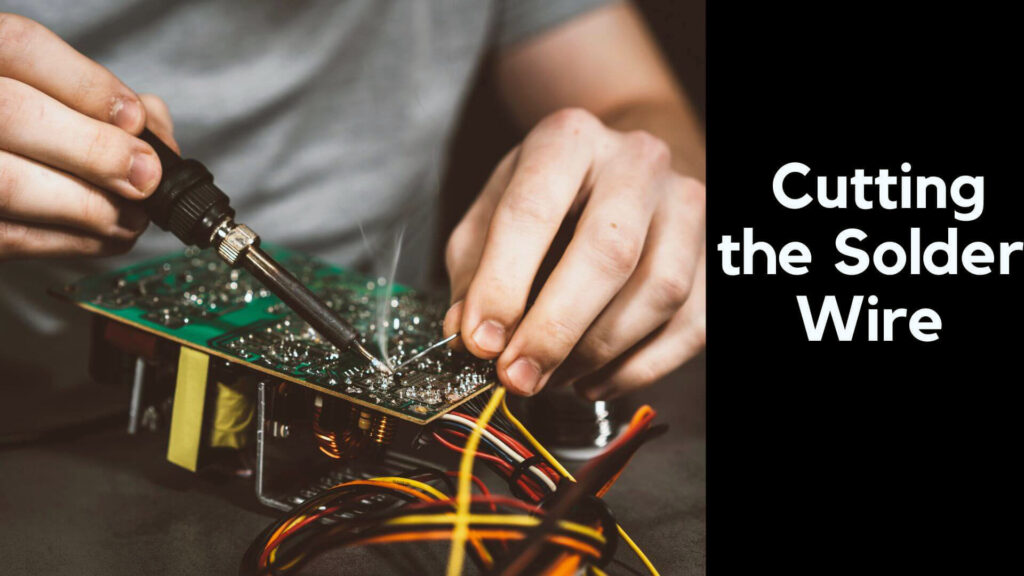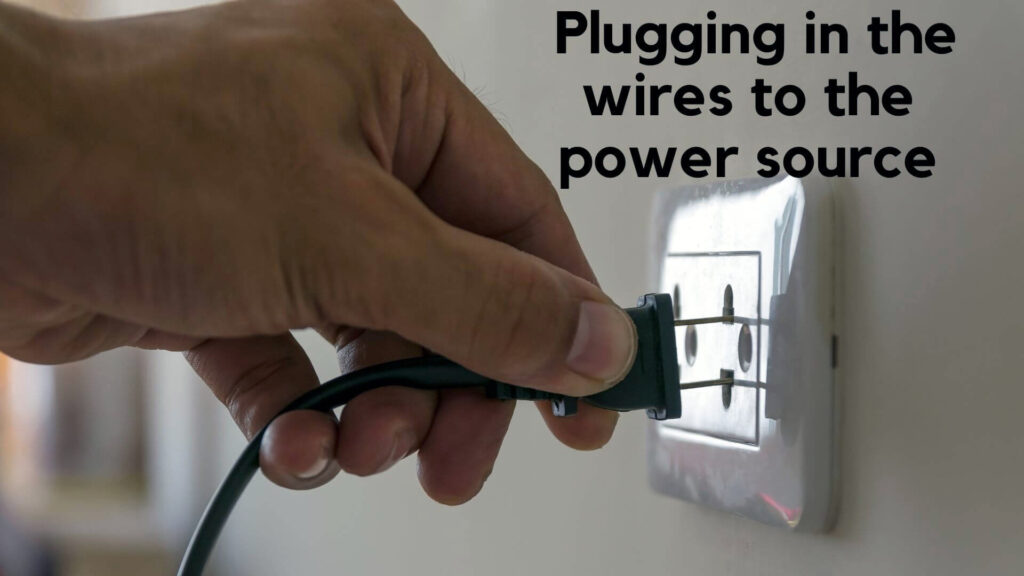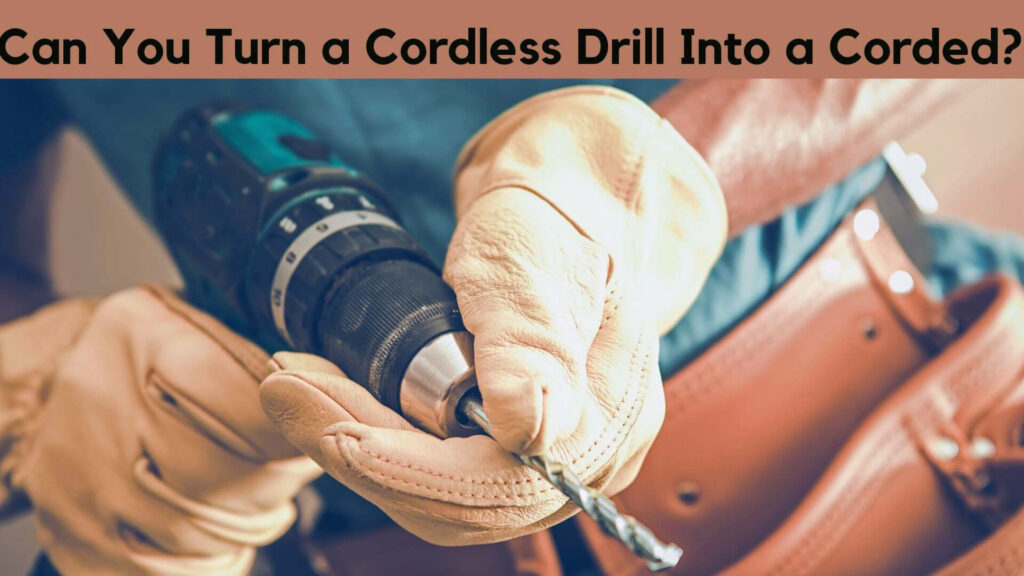Cordless drills have become incredibly popular for their convenience, portability, and versatility. However, they do have a downside: reliance on batteries. Over time, those batteries can lose their charge, and replacing them can be costly. Many DIY enthusiasts have wondered, “Can you turn a cordless drill into a corded one?” The answer is yes—with some technical know-how, you can convert your cordless drill into a corded version. This guide will show you how.
Table of Contents
What Do I Need To Do To Turn My Cordless Drill Into A Corded One?
Before diving into the process, it’s essential to gather the necessary materials and tools to successfully convert your cordless drill. Here’s what you’ll need:
- Cordless Drill: Of course, you’ll need your old cordless drill, ideally one where the battery is no longer functioning.
- DC Power Supply: Since your cordless drill runs on DC power, you’ll need a suitable DC power supply to replace the battery. Choose a power supply that matches the voltage of your drill battery.
- Wires: You’ll need insulated wires to connect the drill to the power supply. Ensure the wires are of the correct gauge for handling the current.
- Soldering Kit: A soldering iron and solder are necessary for connecting wires securely to the drill’s terminals.
- Wire Strippers: To remove insulation from the wires, use wire strippers.
- Electrical Tape: This will help you insulate the connections for safety.
- Multimeter: For measuring voltage and current to ensure your power supply matches the drill’s requirements.
With these materials, you’re ready to transform your cordless drill into a corded one.
Read More: How Many Amps Does a Corded Drill Use?
How to Turn a Cordless Drill into a Corded One – Step-by-Step Instruction:
You need to get the above things to turn a cordless drill into a corded one.
Step 1: Remove the old battery

The first step in converting your cordless drill to a corded one is to remove the battery pack. Here’s how:
- Open the Drill’s Battery Compartment: Most cordless drills have a latch or mechanism that allows you to easily detach the battery.
- Inspect the Terminals: After removing the battery, you’ll see two or more terminals where the battery connects to the drill. These are usually labeled positive (+) and negative (-).
At this point, you’ve prepared the drill for the conversion by clearing the old power source.
Step 2: Cutting the Solder Wire

Once you’ve removed the battery, you’ll need to connect your power supply to the drill’s internal circuits. Here’s the process:
Secure the Connections: After soldering, use electrical tape to insulate the connections to prevent any accidental shorting or sparking during use.
Strip the Wire Ends: Use your wire strippers to expose about 1/2 inch of wire on each end. You’ll need one wire for the positive terminal and one for the negative.
Solder the Wires to the Terminals: Heat your soldering iron and carefully solder one wire to the positive terminal and the other wire to the negative terminal. Be cautious to avoid accidental short circuits.
Step 3: Plugging in the wires to the power source

Now that the drill has wires connected to the terminals, you need to link those wires to your DC power source:
Test the Drill: Plug the DC power supply into a wall socket, and press the drill’s trigger. If everything is connected correctly, the drill should run as though it were battery-powered.
Match Voltage Requirements: Use your multimeter to verify that the DC power supply matches the voltage of your drill battery. For example, if your cordless drill ran on an 18-volt battery, ensure your DC power supply outputs 18 volts.
Connect Wires to Power Supply: Attach the positive wire to the positive terminal of the power supply and the negative wire to the negative terminal. Ensure the connection is tight and secure.
Check Also: Best Corded Drill under $100 You Should Consider!
How Long Will It Take To Turn My Cordless Drill Into A Corded One?
The entire process of converting a cordless drill into a corded one can take anywhere from 30 minutes to an hour, depending on your experience with wiring and soldering. For someone experienced with electrical work, the process could be faster. For beginners, it may take longer, especially if you’re unfamiliar with handling electrical components.
Read More: Can You Use a Corded Drill with a Socket?
When is it Necessary to Convert Cordless Drills to Corded Ones?
Converting a cordless drill to a corded one isn’t always necessary, but there are situations where it makes sense:
- Old or Dead Battery: If the battery of your cordless drill has died and you don’t want to spend money on a replacement, converting it to a corded drill allows you to continue using it.
- Consistent Power Supply: For long-term or heavy-duty projects, converting your drill ensures that you have a constant power source, eliminating the need to recharge batteries.
- Special Projects: When you’re working in a location with easy access to electricity and don’t need the portability of a cordless drill, a corded drill can be more efficient.
Read More: Is a Corded Drill Better Than a Cordless?
How Can the Battery of a Cordless Drill be Charged Without a Charger?
If you’ve lost or damaged your cordless drill’s charger, there are alternative methods to charge the battery:
- Use a Universal Charger: Many universal chargers can be adjusted to match the voltage of your cordless drill’s battery.
- DIY Charging Setup: You can create a DIY charging system using a DC power supply. Connect the power supply to the battery terminals directly, ensuring the voltage and current match the battery specifications.
- Battery Jump: If you have another battery with a similar voltage, you can use it to jump-start your drill battery by connecting the positive and negative terminals of both batteries using wires.
However, these methods should be used with caution, as improper charging can damage the battery or cause safety risks.
Read More: Are Corded Drills More Powerful?
Is a Corded Drill Stronger than a Cordless Drill?
Yes, corded drills are generally stronger than cordless drills because they draw power directly from an electrical outlet, allowing them to deliver consistent power without running out of charge. Here are a few key differences:
- Continuous Power: Corded drills provide uninterrupted power as long as they are plugged in, whereas cordless drills rely on battery life.
- Higher Torque: Corded drills often offer higher torque and can handle heavier-duty jobs, especially when working with tough materials like masonry or metal.
- Lighter Weight: Without the battery, corded drills tend to be lighter, making them easier to handle for extended periods.
That said, cordless drills offer the advantage of portability and convenience, making them ideal for projects where access to electricity is limited.
FAQS About Can You Turn a Cordless Drill Into Corded?
Can I use a cordless drill on a standard household outlet?
Yes, once you’ve converted your cordless drill into a corded drill with a DC power supply, you can use it with a standard household outlet. However, you must ensure that the power supply provides the correct voltage and current to avoid damaging the drill.
What are the Dimensions of a Cord?
The length of the cord used to power your converted drill will depend on your workspace and mobility needs. Most power tool cords range from 6 to 15 feet, but you can add extension cords if necessary. When choosing the wire gauge for your cord, ensure it can handle the current required by the drill.
How do I know if I have the right drill?
Before attempting this conversion, ensure that your drill’s voltage is within the range of available DC power supplies. Most cordless drills will be labeled with their voltage rating (e.g., 12V, 18V, 20V). You’ll also want to check that the drill is in good working condition aside from the dead battery.
Last Opinion
Converting a cordless drill into a corded one can extend the life of your tool and save you from the hassle of constantly charging or replacing batteries. While this conversion isn’t necessary for everyone, it’s a practical solution for DIY enthusiasts or professionals who want a reliable power source for their drill. By following the steps outlined in this guide, you can successfully transform your cordless drill and continue using it for all your projects.
However, keep in mind that the converted drill will no longer have the portability advantage, and you’ll need to work near a power source. If portability is still a priority, investing in a new battery may be the better option.
In conclusion, whether you’re extending the life of an old drill or just curious about DIY solutions, converting a cordless drill into a corded one is a feasible and rewarding project for anyone comfortable working with electrical components.

Hey, I am MD Hrithik Hossain, I’m a huge fan of DIY crafts. My workshop is where I spend most of my spare time, and I’m always working on some project. To that end, I’d like to share some of my knowledge and experience with you in power tools, woodworking, and other specialized materials fabrication.
I will guide you with genuine knowledge that can assist you with deciding whether a drill is appropriate according to your requirements or not. If you want to find the best drill and know which type of drill is most suited for your needs, then I can guide you with my expertise. My passion lies in helping others find the correct products they need at an affordable price.


